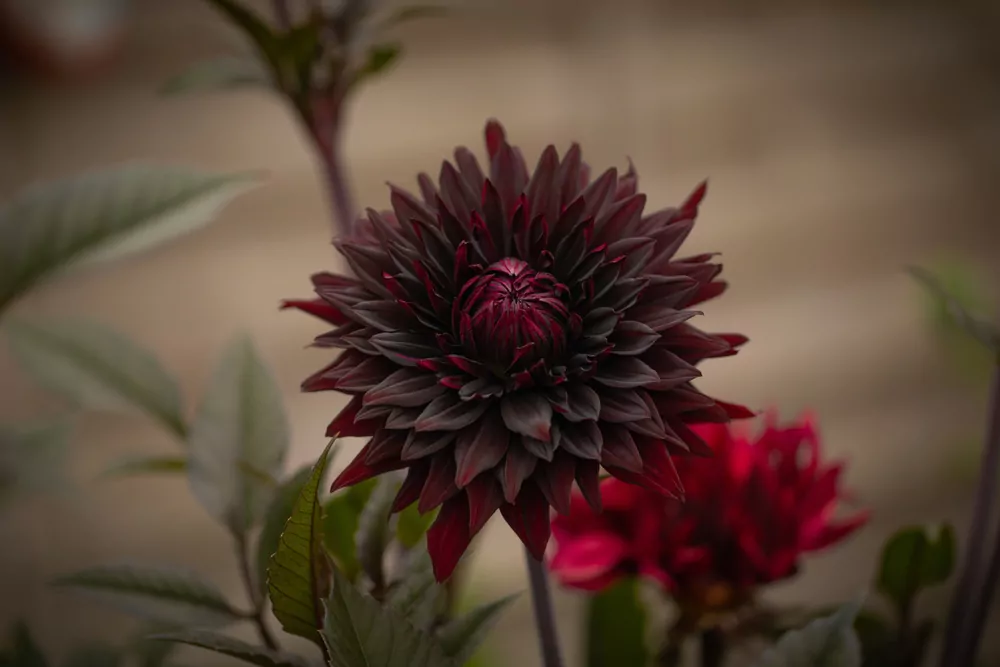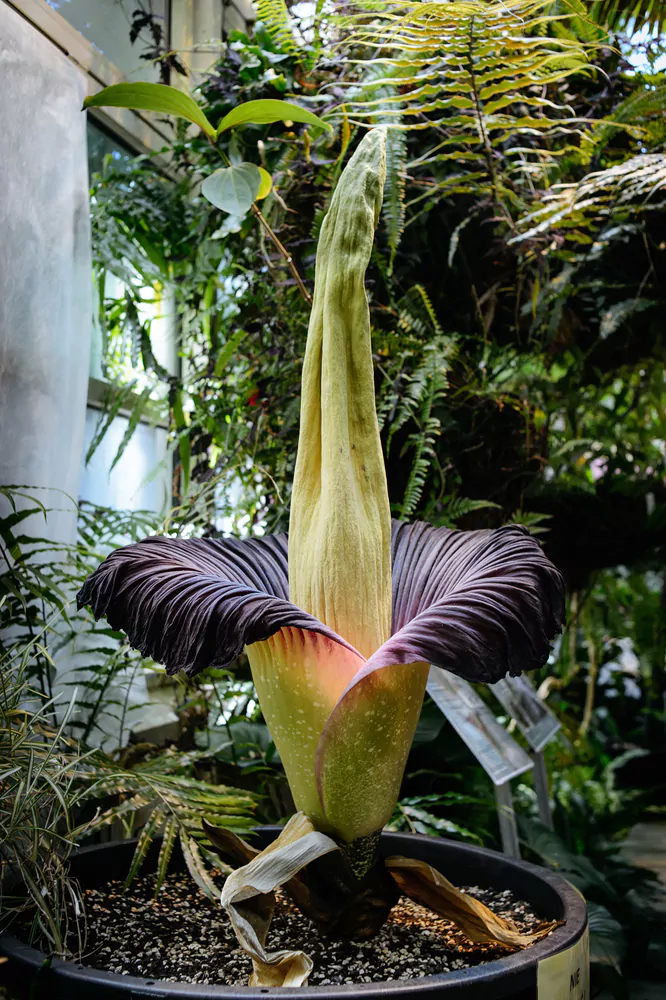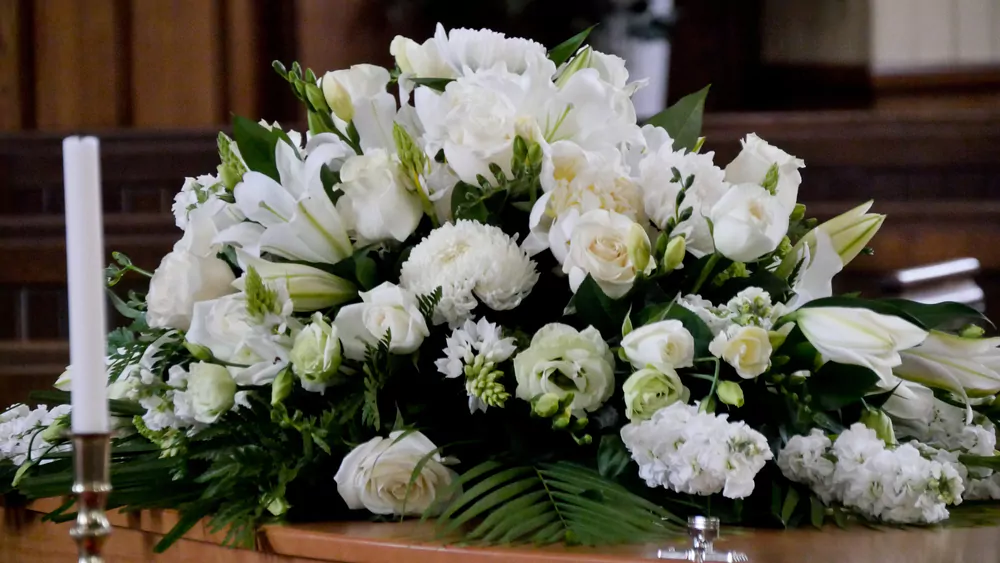Unveiling the Mysteries: The “Flower of Death”

What comes to your mind when you hear about the “Flower of Death”? It sounds paradoxical, doesn’t it? Flowers are usually associated with life, beauty, and positivity. They serve as symbols of love, friendship, and compassion. However, as complex as nature is, it also presents us with an intriguing paradox: the Flower of Death. This term is a colloquial reference to several flowers, often used symbolically across different cultures to represent death or used in funeral rites. But, for this exploration, we will primarily focus on two iconic flowers: the Black Dahlia and the Corpse Flower.
1 Black Dahlia: The Dark Beauty

The Black Dahlia, also known as “Black Beauty” or “Queen of the Night,” is not a naturally occurring flower. It’s a cultivated variant of Dahlia, achieved through selective breeding. The Black Dahlia stands tall and striking with its almost black petals, exuding an alluring, albeit dark, beauty. It was named after the infamous 1947 unsolved murder case of Elizabeth Short, often referred to as the Black Dahlia.
The symbolism of the Black Dahlia is multifaceted. Its dark, rich hues can signify a warning or signify a change or transition. The association with death primarily stems from its namesake’s tragic end, and therefore it’s sometimes used symbolically to represent death or the mysteries surrounding it.
Moreover, the Black Dahlia, as with all Dahlias, is a tuberous perennial plant native to Mexico. The plant dies back to its tuberous roots during winter, only to rise again in the spring. This cycle of rebirth and death further strengthens its symbolic connection with life’s transitory nature.
2 Corpse Flower: The Deathly Aromas

The Corpse Flower, or Titan Arum, is another specimen known as a “Flower of Death,” but for a far different reason than the Black Dahlia. The Corpse Flower earned its name due to the strong, foul odour it emits when in bloom. This smell, akin to the stench of rotting flesh, attracts carrion-eating beetles and flesh flies that help in the pollination process.
Native to the rainforests of western Sumatra and western Java in Indonesia, the Corpse Flower (Amorphophallus titanum) is one of the world’s largest and rarest flowering structures. Its flower can rise up to 10 feet high, while its gigantic leaf, which grows separately from the flower, can reach up to 20 feet tall and 16 feet across. But, despite its grandeur, the bloom lasts only 24 to 36 hours before collapsing.
The Corpse Flower symbolizes the cycle of life, decay, death, and rebirth. It reminds us that life is a continuous cycle, and death is an inevitable part of it. While this plant’s colossal bloom and foul odour make it a symbol of death and decay, it’s also a remarkable example of nature’s adaptability and the complexities of plant pollination strategies.
3 Symbolism across Cultures
Flowers symbolizing death aren’t limited to these two specimens alone. Different cultures around the world have their unique “Flowers of Death.”
- In the Victorian era, flowers were used extensively to convey feelings and messages, known as floriography. Lilies, with their serene whiteness and heavy fragrance, were often used at funerals, symbolizing the restored innocence of the soul of the deceased.
- In Mexico, Marigolds, or “Flor de Muerto” (Flower of the Dead), are used to celebrate the Day of the Dead. The bright, aromatic flowers are believed to guide the spirits of the deceased back to the world of the living.
- In Japan, the chrysanthemum is a symbol of death and is often used for funerals and graves. Similarly, in Chinese culture, white chrysanthemums signify lamentation and grief, making them common at funerals.
- In Europe, particularly in the United Kingdom and other countries with a strong Christian tradition, lilies are often used as funeral flowers. Their pure white blossoms symbolize the restored innocence of the soul of the deceased. Red roses, too, are common, symbolizing respect, love, and courage.
- In the United States, different flowers bear different meanings. Chrysanthemums symbolize death in many states, while lilies and roses are also prevalent. In many Native American cultures, sage, sweetgrass, and other native plants are used in death rites, symbolizing purification and guiding the departed to their afterlife.
4 Floral Mythologies and Symbolism

Myths and legends often weave stories around flowers, giving them symbolic meanings related to death and the afterlife. One such flower is the Narcissus or Daffodil. Greek mythology tells us about a young man named Narcissus, known for his extraordinary beauty and self-absorption. He died while admiring his reflection in a pool of water, turning into a daffodil. This flower is often associated with death, particularly death resulting from self-absorption or vanity.
The poppy, another flower associated with death, sleep, and peace, has its roots in Greek and Roman mythologies. It was sacred to Demeter, Greek goddess of agriculture and fertility, who created the poppy so she could sleep after the loss of her daughter, Persephone. The “sleep” that the poppy induced became a metaphor for death, and hence, poppies are often associated with both eternal sleep and resurrection.
5 Ecological Impact of the 'Flower of Death'
From an ecological standpoint, these ‘Flowers of Death’ have fascinating roles in their ecosystems. The Corpse Flower, for instance, plays a vital role in its rainforest habitat. The stench of the bloom mimics the smell of rotting meat, attracting carrion beetles and flies that aid in its pollination. Thus, while the smell may be unpleasant to humans, it’s an ingenious survival strategy.
Similarly, the Black Dahlia attracts pollinators with its deep, dark hues. Its ability to thrive in various climates and soil conditions, coupled with its stunning beauty, has made it a favorite among gardeners and horticulturists.
6 Conclusions: A Complex Relationship

Our relationship with death is complicated, filled with fear, respect, and fascination. By attributing symbolic meanings to certain flowers, we humanize death, making it a part of life’s natural process rather than an abstract, terrifying concept.
The “Flower of Death” reminds us that beauty and decay coexist in nature. The Black Dahlia and the Corpse Flower, along with the culturally significant flowers, remind us that life and death are two sides of the same coin. They serve as metaphoric representations of the cycle of life, the ephemeral nature of existence, and the profound mysteries that lie beyond our understanding.
These flowers challenge us to find beauty in unexpected places, even in the concept of death, which usually evokes fear and sadness. They show us that death is not an end but a transition, a transformation, and a crucial part of the cycle of life.
In conclusion, the “Flower of Death” carries a vital message: to acknowledge death as an integral part of life. Understanding this helps us appreciate life in its entirety, adding depth and meaning to our existence. So, next time you encounter a Black Dahlia or a Corpse Flower, pause and appreciate its unique representation of life’s most profound truth: our mortality.
Also, if you want to post pictures of flowers, check out our blog on floral captions for Instagram!
Community Q&A
About This Article
Hardik Jethva is an experienced author of the BestCheck family. Working from scratch, he has developed an amazing interest in testing and writing about different products in a transparent manner. His writing skills got more audience for BestCheck. Apart from his professional life, Hardik has his eyes on travelling, meditation, eating healthy food, socializing with people, and car rides.
This article has been viewed 493 times.



